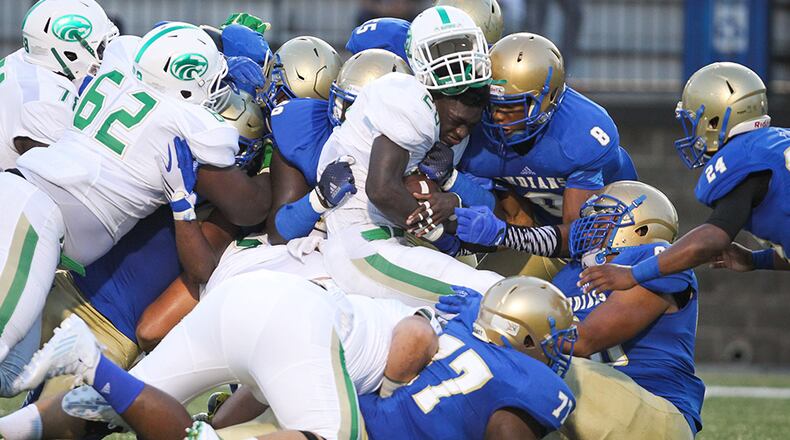All-sports powers Buford and Jefferson appear destined for higher classifications in 2016-17 for enrolling a significant number of out-of-county students.
But other city-school powers – including Carrollton, Cartersville, Calhoun and Gainesville – appear to have escaped the fish net that the Georgia High School Association is using to address perceived competitive advantages among its 455 member schools.
Instead, the net has caught some unsuspecting and seemingly innocuous county schools, such Bleckley County, Jeff Davis, Heard County and Armuchee.
See a projection of the seven classifications below, with information on which schools are likely to be bumped. Thanks to Loren Maxwell for their presentation.
The GHSA this week released enrollment numbers that will be used to put its schools into seven classifications for the 2016-17 and 2017-18 school years. The GHSA’s reclass committee will meet Wednesday to hear appeals of this week’s numbers and then place schools into a record seven classes, one more than the current six.
Also released this week were the percentage of students that each school enrolls outside of its county of origin. For the first time, those with more than 3.0 percent of students outside their county may be placed in higher classifications.
Bremen led public schools with 18.8 percent of students not living in its county, Haralson. Buford is next at 17.1 percent.
That objective with the new 3.0-percent rule was to alleviate alleged competitive advantages that private and open-enrollment city schools might have.
The plan worked for the larger private schools. Those destined to be placed in higher classes are Woodward Academy, St. Pius, Blessed Trinity, Westminster, Marist, Greater Atlanta Christian, Benedictine, Lovett, Holy Innocents', Wesleyan, Pace Academy and Darlington. (Wesleyan, Pace and Darlington might still wind up in Class A if the line is drawn higher than 450 students.)
But city schools, which typically allow the enrollment of students not living in their school districts, were more unpredictably affected.
Those that did not reach the 3.0 percent threshold - and apparently won’t face a class bump - are Calhoun, Carrollton, Cartersville, Dalton, Decatur, Dublin, Gainesville and Rome. Those city schools in line to get a bump are Buford, Bremen, Jefferson, Gordon Lee, Social Circle, Thomasville and Vidalia. Of those 15 schools, 11 were among the top-13 sports programs in their classifications in 2014-15, according to the Georgia Athletic Directors Association.
City schools that fall into the highest class (such as Marietta and Valdosta) are unaffected, as are those that fall into Class A (Commerce, Pelham and Trion).
The other big change in the new classification is the move to seven classes from six.
The new reclassification plan called for the top 10 percent of schools based on enrollment to enter a Big 44. That name was used only to illustrate its effect. In reality, the new highest class will be Class AAAAAAA (7A).
At 10 percent, that would encompass 46 schools, ending with North Paulding (enrollment 2,109).
However, the reclass committee expected that number (2,109) to be lower and will consider a more practical dividing line, such as 2,000. That would make Valdosta (2,006) the smallest of 53 schools and allow for slightly larger regions. The projections below assume a 2,000-student cutoff point. That remains speculative.
Also, the boundary for Class A has not been set. For the projection below, it has been set at 450 students. That also remains speculative.
And finally, for every school that moves up, a school must move down. That is in order to maintain an even number of schools in classes AA through AAAAA. There are 36 schools that the chart below moved up, 36 that went down.
Classification projections
* - Participates in football
About the Author
Keep Reading
The Latest
Featured




